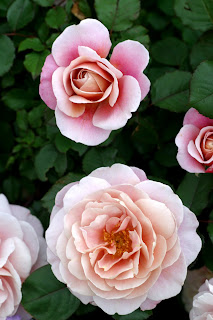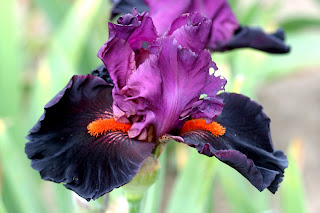The new Powell Gardens Butterfly Garden officially opens to the public on Saturday, May 31, 10a.m. - 3p.m. We will have some of the best butterfly gardeners and enthusiasts on hand to help interpret the garden, give you tips on what to plant to attract butterflies and have some interesting butterflies and moths to see up close.
Matt Bunch, Horticulturist-Heartland Harvest Garden, puts some finishing touches to the garden. Matt is in charge of the new garden as it is an "Insectaries Garden" that will not only attract butterflies, but other important pollinators and beneficial insects as well. We all should never take for granted those fruits and vegetables we eat and that some necessary little critter pollinated those flowers for us so that we could partake of the luscious fruit. Also most insects are beneficials: the good bugs eat the bad bugs and only a small percentage are pests! You will see the beginnings to the Heartland Harvest Garden (our premier edible landscape and newest garden scheduled to open next year) to the west of the arbor above the butterfly garden beds.
Here is an overview of the garden looking south across its tiered beds toward the Visitor Center. There are four beds on the north and four beds on the south side of the Fountain Garden. The stonework ties it in beautifully with the Visitor Center -- come see, no photo can do the beautiful landscape justice.
A rainbow of flowers are in bloom in the new garden starting with red 'Tex Tuff Red' Verbena which is a tender perennial that will bloom all summer.



















































